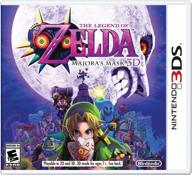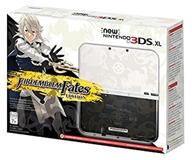Choosing Between the Nintendo 3DS and 2DS Systems
Nintendo offers two product lines of handheld gaming systems - the 3DS and 2DS. While they play the same games, there are some key differences to consider when deciding which model to purchase.
Design and Features
The 3DS line features a clamshell design with a top 3D screen and a bottom touchscreen. There are three models - the original 3DS, the 3DS XL with larger screens, and the New 3DS XL with upgraded processing power.
The 2DS line has a slate-like form factor with both screens side by side. It plays all 3DS games but lacks the 3D display functionality. There is only one 2DS model available.
- 3DS - 3.53" top screen, 3.02" bottom touchscreen
- 3DS XL - 4.88" top screen, 4.18" bottom touchscreen
- New 3DS XL - 4.88" top screen, 4.18" bottom touchscreen
- 2DS - 4.88" single flat widescreen
Portability
The clamshell design of the 3DS makes it more portable to carry around. The 2DS slate form factor is bulkier in comparison. The 3DS models can be safely closed when not in use.
Affordability
The 2DS is priced lower than the 3DS models. It provides a more affordable entry point to play Nintendo handheld games. However, it lacks some extra features of the 3DS.
| Model | MSRP |
|---|---|
| Nintendo 2DS | $79.99 |
| Nintendo 3DS | $169.99 |
| Nintendo 3DS XL | $199.99 |
3D Display
The main advantage of the 3DS is its glasses-free stereoscopic 3D display on the top screen. This allows supported games to take advantage of 3D depth effects. The 2DS lacks this functionality entirely.
Processing Power
The New 3DS XL model has upgraded processing power and RAM compared to the original 3DS/3DS XL. This allows for faster load times and better performance in certain games. The 2DS processing capabilities are in line with the original 3DS.
Game and Accessory Compatibility
The 3DS and 2DS play the entire library of Nintendo 3DS games. Both support all the same accessories like Amiibo figures. There are a handful of New 3DS exclusive games that won't work on the 2DS due to lacking processing power.
When choosing between the 3DS and 2DS, weigh the importance of portability, 3D display, processing power and affordability. For budget-focused buyers, the 2DS is a great starting point. The New 3DS XL offers the best performance and experience if you can afford the premium price tag.
Comparing the 3DS and 2DS Designs and Features
While the Nintendo 3DS and 2DS play the same game library, they have some distinct differences when it comes to their hardware designs and features.
Displays
The 3DS line uses two screens - a top 3D screen and a bottom touchscreen. The 2DS has one wider screen that displays content in 2D.
- 3DS - 3.53" top 3D screen, 3.02" bottom touchscreen
- 3DS XL - 4.88" top 3D screen, 4.18" bottom touchscreen
- 2DS - 4.88" single 2D screen
Form Factor
The 3DS uses a folding "clamshell" design that protects the screens when closed. The 2DS uses a slate-like form without any hinges.
| Model | Dimensions |
|---|---|
| 3DS | 5.3" x 2.9" x 0.8" (closed) |
| 3DS XL | 6.3" x 3.6" x 0.8" (closed) |
| 2DS | 6.7" x 6.6" x 0.9" |
Weight
The 2DS is heavier than the 3DS models due to its solid slate design.
- 3DS - 8 oz
- 3DS XL - 11.5 oz
- 2DS - 12 oz
Buttons and Controls
The 2DS and 3DS models have the same standard buttons - D-Pad, ABXY, analog stick, stylus, game card slot, etc.
The 3DS has a 3D depth slider while the 2DS lacks this due to no 3D display.
Top products in 👾 Nintendo 3DS & 2DS Consoles
Compatibility and Features
The 3DS and 2DS play the entire 3DS game library, use the same system software, and are compatible with all accessories like Amiibo.
Key differences:
- 2DS does not display 3D visuals
- New 3DS has upgraded processing power and RAM
- New 3DS has extra controls like a C-stick and more shoulder buttons
- New 3DS has built-in NFC support for Amiibo
When choosing between the 3DS and 2DS, consider the importance of portability, display quality, and technical capabilities against pricing. The 2DS is the most affordable model while the New 3DS offers premium performance.
Similar products
Weighing Portability vs Affordability with the Nintendo 3DS and 2DS
For gamers looking to play titles in the Nintendo 3DS library, two major factors to consider are portability and affordability. The clamshell design of the 3DS models prioritizes portability while the 2DS offers a more budget-friendly price point.
Another interesting products
Portability
The folding form factor of the 3DS line allows the devices to easily fit into a backpack, purse or pocket. When not in use, the screens are protected when closed.
- Smaller 3DS models under 6 inches long when closed
- Weigh less than 12 ounces
- Can safely toss in bag without concern
The solid slate design of the 2DS is much bulkier in comparison making portability harder.
- Large, fixed shape at 6.7 x 6.6 x 0.9 inches
- Heavier at over 12 ounces
- No screen protection when not in use
Real World Portability
For a student or daily commuter, the more compact 3DS models are far easier to carry around all day than the bulky 2DS.
For example, a 3DS XL fits nicely in a backpack or purse to play games on the train or bus ride to school or work. The 2DS slate is much more cumbersome to transport.
Affordability
The 2DS starting price is $79.99 compared to $169.99 for the base 3DS model. This makes the 2DS much more budget-friendly.
| Model | MSRP |
|---|---|
| Nintendo 2DS | $79.99 |
| Nintendo 3DS | $169.99 |
For parents buying for younger kids, the 2DS is an appealing option. Gamers on a tight budget may also gravitate towards the more affordable 2DS.
Weighing Priorities
Gamers who prioritize portability and take their device on the go frequently will want to strongly consider the clamshell 3DS models.
For those less concerned with transport and more focused on price, the 2DS is the obvious choice.
There are good arguments on both sides. Evaluate your personal priorities around mobility and budget when deciding between the 3DS and 2DS product lines.
Considering 3D Effects and Processing Power
Two key technical factors to weigh when deciding between the Nintendo 3DS and 2DS are the 3D display capabilities and internal processing power.
3D Display
The main feature of the 3DS line is its auto-stereoscopic 3D top screen that allows games to display depth effects without needing glasses.
- 3DS models have adjustable 3D slider
- 2DS completely lacks 3D display tech
For many games, the 3D effect adds immersion and realism:
- Super Mario 3D Land has more depth perception for platforming
- Mario Kart 7 has enhanced sense of speed and distance
- Legend of Zelda: Ocarina of Time 3D improves spatial elements
Processing Power
The New Nintendo 3DS XL model has upgraded internal hardware compared to earlier 3DS/2DS devices.
- Faster CPU with 2 additional cores
- 10MB more RAM
- Improved 3D rendering and graphics processing
This allows for enhancements like:
- Faster load times in games
- More enemies and objects on screen
- Exclusive games like Xenoblade Chronicles 3D
Comparing 3DS Models
| Model | 3D? | Processing Boost? |
|---|---|---|
| Original 3DS/3DS XL | Yes | No |
| New 3DS XL | Yes | Yes |
| 2DS | No | No |
Weighing Priorities
If you value 3D effects and the latest performance, the New 3DS XL is the best choice.
If 3D isn't as important but you still want strong technical capabilities, the base 3DS models are solid options.
For those focused purely on affordability, the 2DS plays all the same games (aside from New 3DS exclusives) at a lower price point.
Evaluate 3D immersion vs processing power vs budget when choosing your next Nintendo handheld.
Assessing Game and Accessory Compatibility
An important consideration when choosing between the Nintendo 3DS and 2DS is game library and accessory compatibility.
Nintendo 3DS Game Library
The 2DS plays nearly the entire library of Nintendo 3DS games, giving access to hundreds of titles:
- Super Mario 3D Land
- Mario Kart 7
- The Legend of Zelda: Ocarina of Time 3D
- Pokémon Sun and Moon
- Animal Crossing: New Leaf
The only exceptions are a small number of New 3DS exclusive titles that require its added processing power such as Xenoblade Chronicles 3D.
Backwards Compatibility
The 3DS and 2DS can play older DS games as well. This provides access to a huge back catalog of legacy Nintendo titles.
Future Proofing
Any new Nintendo handheld games released will be compatible with both systems. So either device will be future proofed for upcoming games.
Accessories
The 3DS and 2DS support the same accessory ecosystem including:
- Amiibo NFC Figures
- Circle Pads and C-Stick
- Styluses
- Headphones
- AC adapters
- Carrying cases
The only limitation is accessories relying on the 3DS 3D display like some virtual reality viewers.
Local Multiplayer
All models can engage in local wireless multiplayer with each other and download play. So you can enjoy compatible multiplayer games with friends who own any 3DS or 2DS system.
Online Multiplayer
The same Nintendo 3DS online services and communities are accessible regardless of model. Players on both systems can connect online for multiplayer gaming, digital store access, system updates, and more.
When it comes to games and accessories, the 3DS and 2DS ecosystems are nearly identical. Both provide expansive access to the full Nintendo handheld experience.
Must-Have Games for Nintendo 3DS and 2DS Owners
The Nintendo 3DS and 2DS have an expansive library of high-quality games. Here are some must-have titles that every owner should consider picking up.
Nintendo Franchise Games
Nintendo's popular franchises have spawned some of the best exclusives on 3DS/2DS:
- Super Mario 3D Land - Iconic 3D platforming
- Mario Kart 7 - Classic kart racing action
- Legend of Zelda: Ocarina of Time 3D - Enhanced port of N64 classic
- Legend of Zelda: Majora's Mask 3D - Remastered Zelda adventure
- Super Smash Bros. for Nintendo 3DS - Smash action on the go
Pokémon Titles
The 3DS family is the go-to system for core Pokémon RPG titles and spinoffs like:
- Pokémon Sun and Moon - Alola region adventures
- Pokémon X and Y - Massive Kalos region quest
- Pokémon Omega Ruby and Alpha Sapphire - Hoenn region remakes
- Pokémon Super Mystery Dungeon - Roguelike dungeon crawler
Action Games
For action-packed experiences, don't miss:
- Metal Gear Solid 3D: Snake Eater - Stealth action epic
- Resident Evil: Revelations - Survival horror standout
- Star Fox 64 3D - Classic space shooter
- Luigi's Mansion: Dark Moon - Spooky ghostbusting adventure
RPGs
The 3DS/2DS has an excellent RPG library including:
- Xenoblade Chronicles 3D - Massive open world sci-fi RPG
- Shin Megami Tensei IV - Post-apocalyptic demon battler
- Bravely Default - Classic turn-based JRPG
- Dragon Quest VIII: Journey of the Cursed King - Akira Toriyama-styled quest
Platformers
Some top platforming experiences include:
- Donkey Kong Country Returns 3D - Challenging banana nabbing
- Rayman 3D - Gorgeous sidescrolling action
- Shovel Knight - Nostalgic 8-bit inspiration
- SteamWorld Dig - Mining and spelunking
Any Nintendo handheld owner is sure to find dozens of quality, must-play experiences throughout the 3DS/2DS library covering all genres and styles.
Mario, Zelda, Pokemon and Other Nintendo Franchise Titles on 3DS/2DS
Nintendo's popular first-party franchises are a huge reason to own a 3DS or 2DS. Here are some of the best entries starring Mario, Link, Pikachu and other icons.
Super Mario
Mario debuted on 3DS with Super Mario 3D Land blending old-school 2D gameplay with 3D worlds. Signature moves like triple jumps and butt stomps transition seamlessly into the 3rd dimension.
The fixed camera allows for precise platforming challenges requiring pixel-perfect jumps. The stereoscopic 3D adds depth and immersion to the experience.
The Legend of Zelda
Ocarina of Time 3D remasters the Nintendo 64 classic with improved graphics and GAMEin noise-free 3D audio. Exploring Hyrule and conquering dungeons truly come to life on the 3DS.
Majora's Mask 3D likewise modernizes the critically acclaimed sequel with enhanced visuals and controls. It stands as one of the darkest and most unforgettable entries in the Zelda canon.
Pokémon
The 3DS family is home to several seminal Pokémon RPG adventures. Pokémon X and Y ushered the series into the 3D era with 721 Pokémon and the new Fairy type. Mega Evolution added a new tactical layer to battles.
Pokémon Sun and Moon brought trainers to the tropical Alola region based on Hawaii. It introduced challenges like island trials and Totem Pokémon battles.
Donkey Kong Country
Donkey Kong Country Returns 3D brings DK's challenging 2D platforming to handheld. HD rumble recreates realistic motion effects like mining carts and rhino barrels. The 3D accentuates the depth and immersion.
Fire Emblem
Fire Emblem Awakening reinvented the tactical RPG franchise with marriage and offspring systems. Permadeath and customizable difficulty offer options for all play styles. DLC maps expand the already massive game.
Animal Crossing
New Leaf took the popular village life simulator fully online. Players can visit each other's towns and leave messages or items. The real-time clock and seasons create endless daily surprises.
Nintendo handhelds are defined by Mario, Zelda, Pokémon and other icons. 3DS and 2DS continue this legacy with stellar, exclusive new adventures.
Tips for Saving on an Amazon Prime Subscription
Take Advantage of Free Trials
Amazon offers a free 30-day Prime trial, giving you full access to all membership benefits. This is a great way to test out Prime for a month without spending anything.
Look for Discounted Student Pricing
If you're a student, you can sign up for Prime Student at 50% off the regular yearly price. It includes the same perks as regular Prime.
Split the Cost of a Family Plan
Use Amazon Household to share Prime benefits with one other adult. You could split the yearly cost with a friend or family member.
Take Surveys in Exchange for Prime Offers
Occasionally Amazon offers promotions like taking a survey in exchange for extended Prime trials. Watch for these opportunities to earn free subscription time.
Shop on Prime Day for the Best Deals
Sign up for a 30 day free trial before Prime Day to shop all the exclusive discounts. Just be sure to cancel afterwards if you don't want to continue the membership.
With creative and legitimate tactics, you can enjoy Prime benefits and still save money. Let me know if you need any other subscription-related suggestions!
What Are The Best Nintendo 3Ds & 2Ds Consoles For Gaming?
According to the search results, here are some of the best Nintendo 3DS & 2DS consoles for gaming:
- New Nintendo 2DS XL - Black + Turquoise With Mario Kart 7 Pre-installed
- Nintendo New 2DS XL - Black + Turquoise
- Nintendo 2DS - Legend of Zelda Ocarina of Time 3D
- New Nintendo 2DS XL Handheld Game Console - Orange
- Nintendo 3DS Midnight Purple - Nintendo 3DS
- Nintendo New 3DS XL - Super NES Edition + Super...
- MINECRAFT CREEPER EDITION NEW Nintendo 2DS LL Game Console Japan...
- Nintendo New 3DS XL - Black
The New Nintendo 2DS XL - Black + Turquoise With Mario Kart 7 Pre-installed is the top-rated console according to CherryPicks, with a CPR rating of 9.8. The Nintendo New 3DS XL Console - Black (Renewed) and Nintendo 3DS XL - Blue/Black [Old Model] (Renewed) are also highly rated on Amazon Renewed. The Nintendo 2DS XL is a popular choice for its affordability and compatibility with both DS and 3DS games. Ultimately, the best console for gaming depends on personal preferences and budget.
What Are The Differences Between Nintendo 3Ds And 2Ds Consoles?
Here are the differences between Nintendo 3DS and 2DS consoles:
In summary, the main differences between the Nintendo 3DS and 2DS consoles are the design, display, price, size, and motion controls. The 3DS has a clamshell design with a 3D display, while the 2DS has a flat design with a 2D display. The 2DS is generally cheaper and slightly larger than the 3DS, but it does not have motion controls. Both consoles are compatible with all 3DS and DS games available in the market.









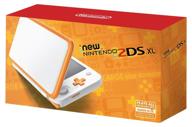
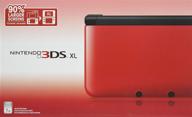

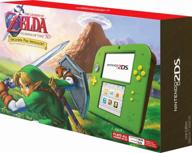
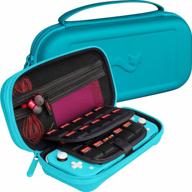

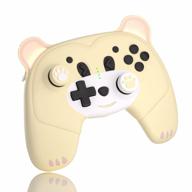

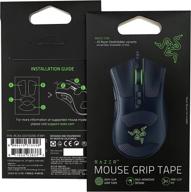
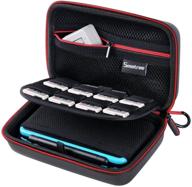

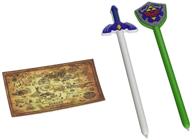
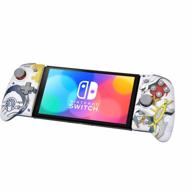
![🎮 red nintendo new 3ds xl - limited edition [now discontinued] logo](https://images.revain.org/blob/revain_storage0p4dxa2a_1d607f5ff1@128x128.jpg)
